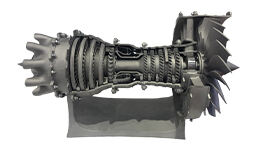Resin 3D Printing: Enhancing Precision and Detail
Resin 3D printing is revolutionary in the field of additive manufacturing, as it provides an unmatched level of precision and detailed features for a variety of industries. In this case, a high resolution model or functional part is formed by UV light cured photopolymer resins that are used in advanced technology for producing perfectly finished surfaces.
Advantages of Resin 3D Printing
One primary advantage of resin 3D printing revolves around its ability to create parts with extremely fine details and soft surfaces. Instead of solidifying thermoplastic materials on various layers like FDM (Fused Deposition Modeling) printing, resin printers employ liquid photopolymers that harden when exposed to ultraviolet light. Consequently, there are very few lines dividing layers within the produced parts; hence making this method suitable for producing reflective parts which have complex finishes.
Furthermore, it can use different materials such as standard resins, flexible resins, castable resins for jewelry making, and engineering grade resins known for their heat resistance and durability among other properties. With these properties in mind, prototyping becomes possible using resin printing followed by product development stages before final production across industries.
Applications across Industries
The flexibility and precision demonstrated by resin 3D printing means that it has found uses within various industries. Take jewellery design as an example where highly intricate molds ready to be used in casting precious metals are being realized through the use of resin printers with unimaginable accuracy.
In dental and medical fields, resin printers allow fabrication of dental models surgical guides as well as prosthetics tailored to each patient’s needs. Some types of these resins are biocompatible thus they can be safely integrated into the human body promoting healthcare solution through resin printing.
Innovations and Future Directions
Continuous innovations aimed at improving material characteristics and increasing availability are the focus areas in developing 3D printable resins today. Consequently manufacturers have come up with varieties for biocompatible, thermally resistant and flexible resins making it possible to use resin printing in aerospace and consumer electronics applications respectively.
Additionally, advances in printer technology are improving print speeds and efficiency thus expanding access of resin printing for rapid prototyping and small-batch production. By simplifying the design-to-print process through integrated software solutions designers and engineers can easily optimize their models for resin printing.
Conclusion
In conclusion, resin 3D printing is a game changer when it comes to additive manufacturing due to its unmatched precision, detailing as well as material versatility. From jewelry design to medical applications, this method continues to defy the impossible leading to innovative industries with better results. This means that as more people adopt newer technologies such as these ones resin 3D printing will spearhead customization in manufacturing by providing personalized solutions whose construction principles are founded on imagination or instinct.
Recommended Products
Hot News
-
3D Printing: The Key to Design Freedom and Sustainability in Smart Factories
2024-02-05
-
How 3D Printing and Robotics are Transforming Smart Factories
2024-02-05
-
How UNITECH 3D PRINTING (DONGGUAN) LIMITED (Dongguan Huilichuang 3D Technology Co.,Ltd) is Revolutionizing the 3D Industry with Multiple Printing Techniques
2024-02-05
-
UNITECH 3D PRINTING (DONGGUAN) LIMITED (Dongguan Huilichuang 3D Technology Co.,Ltd): A Pioneer in Diverse 3D Printing Solutions
2024-02-05

 EN
EN
 AR
AR
 FR
FR
 DE
DE
 IT
IT
 JA
JA
 KO
KO
 PT
PT
 RU
RU
 ES
ES


